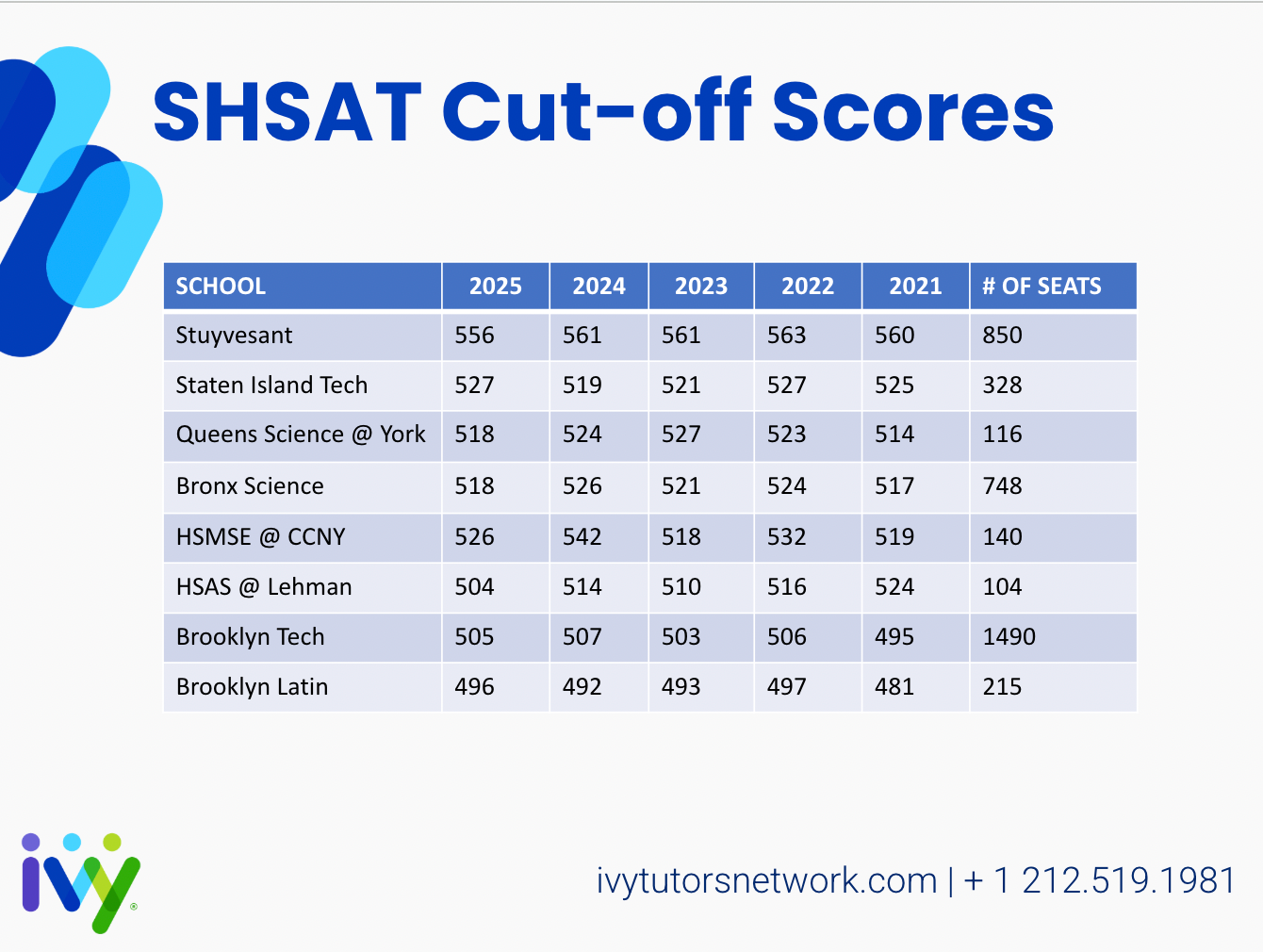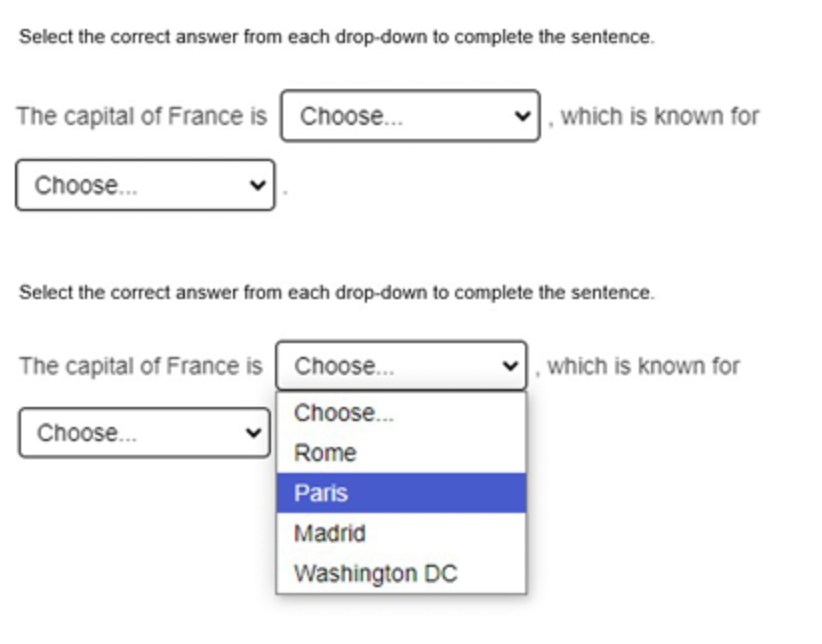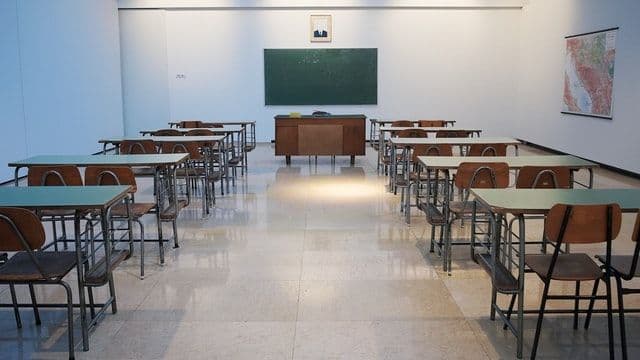
SHSAT: Everything You Need to Know
The SHSAT is going digital in 2025 and adaptive in 2026. Here’s everything you need to know about the test that gets you into a specialized high school in New York City.

This blog was originally published in October 2022 and has republished with updated information.
What is the SHSAT?
The SHSAT is The Specialized High Schools Admissions Test, which is required for admission to 8 of the 9 specialized public high schools of New York City.
There are 9 specialized high schools in New York City:
- Stuyvesant High School
- Bronx High School of Science
- Staten Island Technical High School
- Queens Science at York College
- High School of American Studies at Lehman College
- High School for Math, Science and Engineering
- Brooklyn Technical High School
- Brooklyn Latin High School
- LaGuardia High School (no SHSAT required)
These schools are known for their academic rigor, top teachers, driven students, great course offerings and exciting extra-curricular opportunities. The alumni of these fantastic high schools tout amazing accolades; Bronx High School of Science alumni, for example, hold 9 Nobel Prizes.

How many people take the SHSAT?
About 26,000 NYC eighth graders took the SHSAT in October 2024. This 3-hour test is the only criterion for gaining entry into one of New York City’s nine specialized public schools. These schools combined only accepted approximately 4,000 students for the following 2025-26 school year. These statistics are typical, which means that about 85% of those students who applied were rejected.
Is the Digital SHSAT Different?
No - or rather, not yet. In 2025, the only difference between the digital and traditional SHSAT is that it’s taken on a computer. The test will otherwise look like previous years’ tests.
In 2026, however, the SHSAT is becoming a computer adaptive test (CAT). The NYC Schools website describes it this way:
A CAT is an exam that selects the questions that a student sees based on their ongoing performance. For example, a test-taker who performs well on a moderately challenging prompt will then receive a more difficult item; a student who does not answer such an item correctly will then be asked a less difficult question. Students will all be tested on the same grade-level standards, but the level of complexity of each question will be dependent upon the preceding response.
The SAT is already a digital adaptive exam. If you’re looking to better understand what that means, check out this blog. One quick note: unlike the SAT, which adapts by module, available information does not suggest the SHSAT will use two modules per section. Rather, each succeeding question will be based on performance on the questions that came before.
When is the SHSAT in 2025?
Official test dates for the 2025 SHSAT have not yet been announced. Typically the SHSAT takes place in October and November for 8th graders and December for 9th graders. We’ll update this blog once they’re released, but you can also visit the DOE Website for the most accurate and up-to-date information on testing dates.
How to register for SHSAT?
To register for the SHSAT, you need to log into your MySchools account. If you do not already have an account, you can create one.
When you are logged into your account, you will be given the option to rank the specialized high schools in order of preference. Give some thought to this and make sure you are truly listing schools in the order you would want to go to them.
Once registered, you will then receive a personalized test ticket with information on when and where you will take the test.
You can also register for the SHSAT through your school counsellor.
How long is the SHSAT?
The test is 180 minutes and you can only take it once. There is a make-up date in case of emergencies and a November date for 9th graders and students with special needs. The SHSAT is probably the longest test your student will have ever taken - believe it or not, it’s actually longer than the SAT!
How is the SHSAT scored?
Based on the numbers of questions answered correctly, students receive a raw score, which is then converted to a scaled score out of (roughly) 720. Read more about the score calculation here.
The test is meant to be very hard. But the good news is that you don’t have to get an A (or 90%+ of the questions correct).
We estimate that kids whose scores qualify them for a specialized high school only need to get 70% to 80% of the questions right (depending on the school you are aiming for). The test is heavily curved based on the performance of all the students who take the test that year as compared to the number of spots available. The curve is done separately for the Math Section and for the English Section.
Because students are asked which school is their #1 – #8 choice, the curve is also affected by this ranking. A score that is good enough to get into Stuyvesant but prioritizes Bronx Science over Stuyvesant, the student will likely go to Bronx Science and leave an extra spot for someone who may otherwise have had a score that’s on the cusp of getting into Stuyvesant or Bronx Science.
The SHSAT rewards people who are much stronger in one subject over the other.
If you are a math genius and get every math question right, you only need to get approximately 10 out of 57 questions right on the English to get a spot in one of the specialized high schools of NYC. Same goes for “left brain” geniuses: if you get a top score on the grammar and reading comprehension sections (57 questions altogether), you don’t have to get very many math questions right to get into the school of your choice. We estimate that if you get all the ELA (or Math) questions right, you need to get fewer than half of the questions right on the 2nd section to earn a spot at Stuyvesant.
Want more good news? You can choose which section to do first, the math or English … or you can even skip around. You are free to do the 114 questions in any order you like.
How do you pass the SHSAT?
The SHSAT is not a pass/fall test. Instead, there are cut-off scores for each of the specialized high schools. More on this under the next heading…
What are the NYC specialized high school test scores?
The cut off scores for acceptance (out of approximately 720 / 360 Math + 360 ELA) to the specialized high schools of NYC are listed below with their corresponding 2023 numbers. The 9th Specialized High School in New York is LaGuardia High School, which requires an audition rather than the SHSAT test.
SHSAT Score Cut-offs 2024/2025 School Year
- Stuyvesant 556
- Bronx Science 518
- Brooklyn Latin 496
- Brooklyn Technical 505
- HSMSE @ CCNY 526
- HSAS @ Lehman 504
- Queens Science @ York College 518
- Staten Island Tech 527

How many questions are on the SHSAT?
There are 57 ELA (English) questions and 57 Math questions.
What are the SHSAT ELA questions?
Of the ELA questions, roughly 9 to 11 questions now test grammar and the remainder test reading comprehension through questions which ask students to interpret what they have read in 6 text passages provided during the exam.
What are the SHSAT math questions?
Of the Math section questions, there are 52 multiple choice questions and 5 grid-in questions, where students have to fill in the correct numerical solution without being given answer options to choose from. SHSAT math questions are both word problems and equations.
There are questions that pertain to:
- Numbers/Operations
- Rates per Unit
- Order of Operations
- Percent/Ratios/Proportions
- Fractions/Decimals
- Discount Interest
- Factors/Primes/Divisibility
- Exponents & Radicals
- Absolute Value
- Scientific Notation
- Counting Principle
- Imaginary Operations
- LCD & GCF
- Age/Times/Clock
- Sequences/Counting
- Charts/Diagrams
- Even/Odd
8th-grade Algebra
- Solving for X
- Plug-ins
- Inequalities
- Geometry
- Circles
- Triangles
- Quadrilaterals
- Number Lines
- Probability, Combinations, Mean/Median/Mode
What do the digital SHSAT questions look like?
The SHSAT test makers released examples of “technology-enhanced questions”(i.e. questions that you no longer answer through standard multiple choice). A few of the examples are:
- Being shown a list of numbers and needing to drag and drop the numbers into even and odd columns.

- Fill in the blank for which students must type their answers.

- In-line drop downs from which students must select the right answer.

You can see the full document of examples here.
How hard is the SHSAT?
The difficulty of the SHSAT, like that of any other standardized test, is relative to each student’s individual strengths and weaknesses. Whether starting to prepare for the SHSAT at the end of 7th grade, the summer between 7th and 8th grades or at the beginning of 8th grade (right before the exam), many students may not have yet learned some of the math topics they are expected to know for the SHSAT. This can make the test seem much harder. Encountering math that is foreign to the student can feel devastating and make the student lose confidence in his/her abilities. This is one reason to take a diagnostic exam in 7th grade. It can be empowering to understand what the gaps are and how much studying is needed to fill those gaps.
Why is the SHSAT so hard?
The way the questions on the SHSAT are formulated can make the test particularly difficult for students. The SHSAT does not just require close reading of the passages, but of the questions as well. Although some answer choices may make accurate statements about the passage, this does not mean they are the right answer, and can often be traps. Students need to be careful to choose the answer choice that directly responds to the question as it is phrased, even if it is less vivid and specific. The same applies to the math section. For example, you may solve an equation correctly, but not realize until it’s too late that the question was asking for the value of 3x, not x. There may be volume questions where two of the values are in inches, and one in feet. If you neglect to convert the units, you will arrive at the wrong number, which naturally, will be among the answer choices.
Unlike many other tests, the SHSAT also includes poetry on the reading comprehension section. This can pose a challenge to some students who lack experience analyzing and interpreting figurative language. Some of the prose passages can also be quite difficult, especially those extracted from 19th century texts, which often contain antiquated vocabulary and syntax that most students will not have encountered in their normal reading.
Another source of difficulty on the SHAT is the timing component. Students are given a 3-hour block of time, and though it is suggested to spend 1 hour 30 minutes per section, they are ultimately responsible for pacing themselves. This is very different from most other tests, which have a set time limit for each section. If a student hasn’t practiced their pacing, they run the risk of spending too much time on one section, resulting in them not being able to answer all the questions or having to guess.
How to prepare for SHSAT?
The key to mastering the SHSAT lies in ample and consistent practice. A student’s academic results in middle school are usually a good indicator of how they might fare on the SHSAT. The more students familiarize themselves with the kind of material covered on the test and work on testing skills like time management and concentration, the better their results will be.
A student should begin to prepare at least a few months in advance of the test. If a student has consistently struggled in their academic courses, has a history of poor test-taking, or has challenges with test-anxiety, time management or prolonged concentration, then additional time will be required to focus on lesson review or test-taking skills. Even if a student has a comprehensive knowledge of the topics being assessed, they might struggle with finishing the test on time or fall for some of the test’s “traps.” Likewise, if a student is especially adept at test-taking, they might still need to brush up on some of the many more difficult topics covered on the SHSAT.
Most students begin their preparation by getting their hands on a test prep book, and working through a few untimed practice tests. Unfortunately, reviewing content and working through problems won’t help your child get an accurate sense of their test-taking abilities and learning needs. We recommend having a parent or tutor supervise and time several of their practice tests in the months leading up to the test date, starting with a diagnostic test, ideally in the second half of 7th grade, to help develop an organized study plan.
Should I prepare differently for the digital SHSAT?
You should study the same topics and material for the digital SHSAT as the paper version. One thing we’ve updated in our SHSAT tutoring at Ivy Tutors Network, however, is preparing students for the way the questions will look in the digital format and the “actions” they’ll have to take to answer them (such as dragging and dropping the right word into a sentence).
It’s also a good idea to take a practice exam as a digital exam so that you’re used to the new format.
SHSAT 3 Study Tips from Ivy Tutors
- Start with a diagnostic practice test to provide a better sense of the student’s strengths and weaknesses, and a valuable roadmap for topics to review and testing skills they’ll need to master. We can help administer this test and provide a comprehensive report to help organize the test prep process.
- Take additional proctored practice tests after several months of study, and/or a month before the test date, to gauge the student’ progress, inform their long-term test prep plan, and build their confidence in test taking. Like the diagnostic test, these tests should be timed and proctored (by a parent or tutor), re-creating the actual test conditions so that the student can accurately assess their test taking skills.
- “Perfect practice makes perfect.” Practice is a good thing, but students who don’t first learn the content and strategies related to their test are just “practicing” or reinforcing their mistakes. Students should make sure they understand why they got the problem wrong (yes, all of them!) before moving on to more practice.
In general, all students benefit from some form of preparation, and should give themselves enough time to do so. If your child has a particularly demanding school workload or participates in lots of extracurricular activities, then it might be wise to begin SHSAT preparation in 7th grade, or during a period when they have more free time, like the summer between 7th and 8th grades.
Ivy’s brilliant and caring tutors have helped thousands of students learn smart studying and test taking strategies, understand key concepts and build confidence, skills that are vital not just for SHSAT, but for the SAT, ACT and more. Regular SHSAT tutoring sessions create the necessary structure and reinforcement that students often need to practice consistently.
Additionally, we provide SHSAT Classes, which are online workshops in small groups. Here, students engage in a diagnostic exam, review subject matter, and acquire valuable tricks and strategies to excel on this challenging test.




